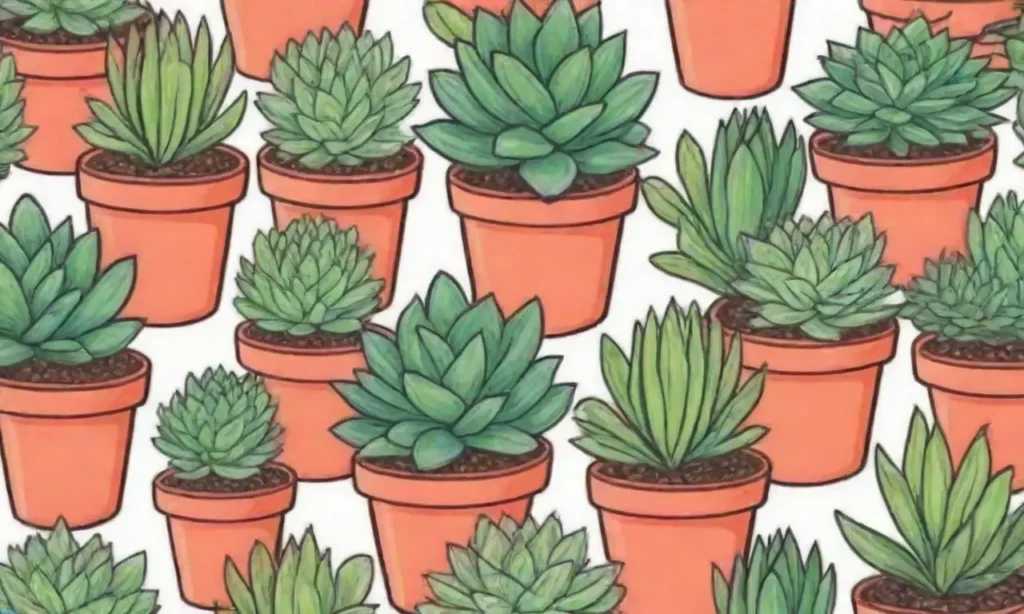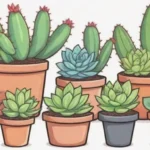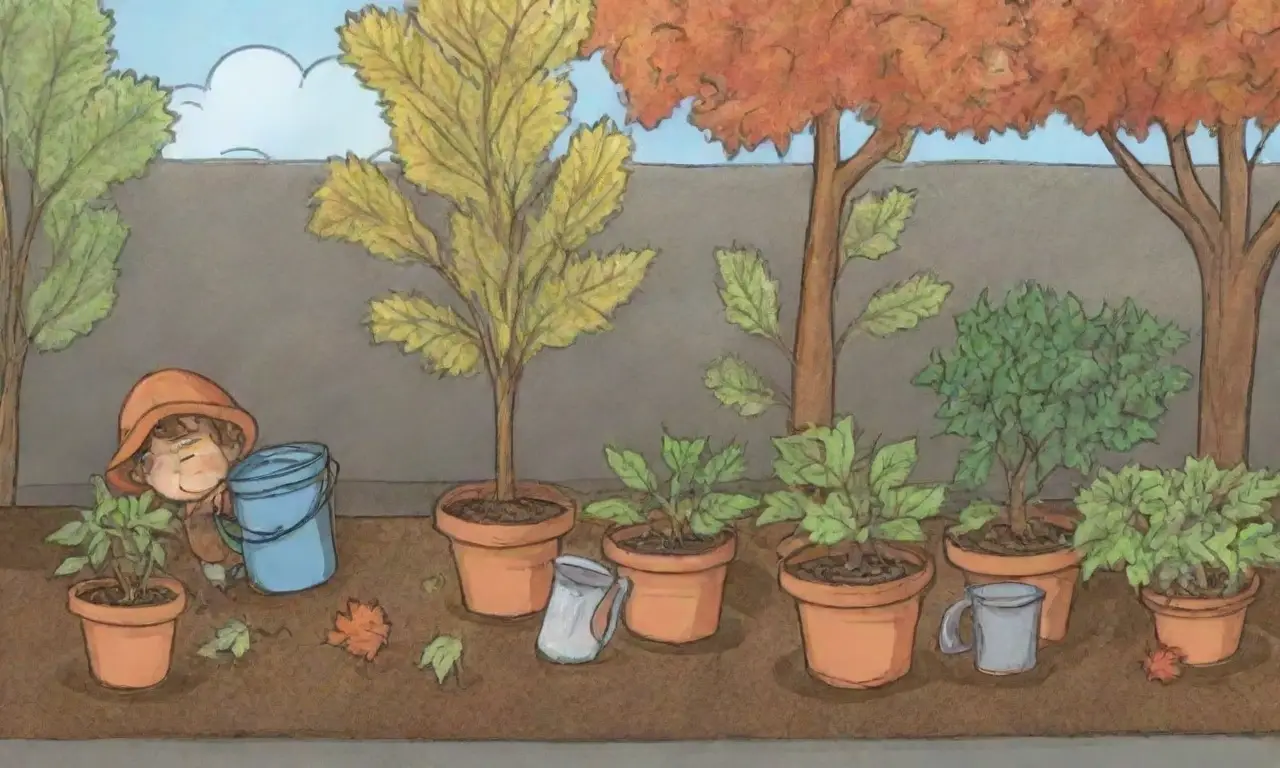Do’s and Don’ts of Spotting Healthy Leaves on Succulents

Introduction
Succulents are beautiful, low-maintenance plants that many gardening enthusiasts adore for their unique shapes and vibrant colors. Known for their ability to store water in their leaves, stems, or roots, these plants can thrive in a variety of environments as long as their care requirements are met. However, recognizing the health of succulent leaves is crucial in maintaining their vitality and avoiding common pitfalls that could lead to plant problems.
This article aims to provide a comprehensive guide on the do’s and don’ts of spotting healthy leaves on succulents. By understanding what healthy leaves should look like and identifying signs of distress, you can better care for your succulent plants and keep them thriving for years to come.
The Importance of Healthy Leaves
Healthy leaves are the lifeblood of succulents. They are responsible for conducting photosynthesis, the process that converts sunlight into energy. The leaves also serve as water reservoirs, allowing the plant to survive during dry spells. Regularly monitoring the health of your succulent leaves can prevent a host of problems, including pests, rot, and disease.
One of the primary indicators of a succulent's overall health is the condition of its leaves. Healthy leaves will have a plump, firm texture and a vibrant color indicative of their variety. In contrast, unhealthy leaves may appear shriveled or discolored, signaling underlying issues. This article will elaborate on what constitutes a healthy leaf and help you develop an eye for spotting problems before they escalate.
Understanding and recognizing healthy leaves will not only contribute to the longevity of your succulents but also enhance your gardening experience. A thriving plant can significantly affect your home or garden's aesthetics and can even be quite rewarding emotionally. Therefore, investing time into learning about the signs of healthy leaves is crucial for any succulent owner.
Do's of Spotting Healthy Leaves
Do Familiarize Yourself with Leaf Varieties
The first step in spotting healthy leaves is to familiarize yourself with the various types of succulents and their specific leaf characteristics. Each succulent variety has its distinctive features, such as shape, size, color, and texture, which you should learn to identify. For example, Echeveria leaves are often thick and rounded, while Jade Plants (Crassula ovata) have fleshy, oval leaves.
Understanding the expected appearance of the leaves allows you to quickly identify any deviations from the norm. Close observation can reveal early signs of stress, such as discoloration or dullness. Moreover, knowing the ideal leaf characteristics enables you to compare your plants with healthy specimens, whether in-person or through trusted sources like gardening books and online forums.
 Understanding Leaf Drop: Indicators of Succulent Plant Health
Understanding Leaf Drop: Indicators of Succulent Plant HealthAdditionally, you can engage in plant communities where enthusiasts share insights and photographs of their succulent leaves. This interactive approach not only helps you learn more about different varieties but also allows you to clarify any doubts you may have, ultimately improving your ability to identify healthy versus unhealthy leaves.
Do Inspect Regularly
Just as you would monitor your garden for weeds, regularly inspecting your succulents for signs of distress is crucial. Set aside time each week to examine the leaves of your plants, looking specifically for texture, color, and overall vitality. Healthy leaves should feel firm and plump, signaling that they are full of moisture.
While inspecting, look closely for discoloration, blemishes, or signs of wilting. Healthy leaves typically maintain a vibrant color, whether that’s the deep greens of Haworthia or the soft pastels of Sedum. Any browning tips, spots, or squishy, soft areas often indicate overwatering, rot, or potential pests. Early detection allows you to act promptly, whether by adjusting your watering schedule, repotting, or applying pest treatments.
Furthermore, this practice helps you understand your plants' growth cycles better. Many succulents enter periods of dormancy where their leaves may appear to be less vibrant. Knowing the expected behavior during these cycles allows you to differentiate between a natural state and a health problem.
Do Use Quality Soil and Pots
Choosing the right soil and pot for your succulents is vital for maintaining the health of their leaves. Well-draining soil is essential; it prevents excess moisture from pooling in the pot, which could lead to root rot. Look for soil mixes specifically formulated for succulents that often contain ingredients like perlite, coarse sand, or pumice.
In terms of pots, a container with drainage holes helps ensure any excess water flows out freely. Succulents do not thrive in soggy conditions, and standing water is detrimental to leaf health. Investing in unglazed clay pots can be beneficial, as they absorb moisture and contribute to regulating humidity levels around the plant.
Make sure to research and choose soil and potting solutions that fit your specific succulent varieties. This will keep your plants hydrated without overwhelming them, ultimately maintaining the plumpness and turgidity of their leaves. Healthy soil and pots create the best environment for root systems, which in turn nurtures the leaves.
Don'ts of Spotting Healthy Leaves

Don't Ignore Environmental Factors
While you may be tempted to consider only the physical characteristics of your succulent leaves, it’s equally essential to evaluate the environmental factors affecting your plants. Factors such as light, temperature, and humidity can significantly impact leaf health. Different succulents require varying light levels—some thrive in direct sunlight, while others prefer partial shade.
Ignoring appropriate light conditions can lead to problematic leaves. For instance, too much sun exposure may cause leaf scorching, characterized by brown, crispy tips, while inadequate light may result in etiolation, where the plant stretches towards a light source, leading to long and leggy growth. Regular exposure to extreme temperature fluctuations can also stress the plant, leading to wilting or shriveling leaves.
Ensure your plants are located in suitable conditions. Rotate them occasionally to give areas that might not have received light as much focus. Every succulent has its perfect environment, so continually adjust based on the specific needs of your plants, and monitor the leaves accordingly.
Don't Overwater
One of the most common mistakes succulent owners make is overwatering. It's essential to let the soil dry out completely between watering sessions. Succulents are adept at storing water, so frequent or excessive watering can lead to root rot and unhealthy leaves. Overwatered plants often display yellow, mushy leaves that eventually fall off.
To avoid this error, check the moisture content of the soil by inserting your finger about an inch deep into the pot. If the soil feels damp, hold off on watering. Instead, allow sufficient time for the soil to dry out fully before providing water again. During the dormant season, you should also reduce watering even further, as succulents require minimal moisture when not actively growing.
Additionally, factors like season and environment should guide your watering schedule. In hot summer months, your succulent may require more frequent watering, whereas in the winter, it might need a complete break. Always err on the side of caution and remember that succulents can recover from dryness better than from being overwatered.
Don't Neglect Pest Control
Succulents, while generally hardy, are not immune to pests like mealybugs, aphids, and spider mites. These pests thrive in the moist conditions that may arise from overwatering or high humidity. They can sap the vitality of your succulents, leading to the decline of healthy leaves and, in severe cases, plant death.
Regular inspections are a must; quickly identify pests and treat infestations immediately. Use a gentle spray of water to dislodge pests or apply insecticidal soap as a more potent solution. If the infestation is severe, you may need to remove severely affected leaves or even repot the plant into fresh soil.
Establishing a routine for monitoring and maintaining the health of your succulents can help you manage pest issues before they escalate. A healthy plant is less likely to be negatively affected by pests, so focus on creating optimal growing conditions and promptly addressing any problems when they arise.
Conclusion
In summary, maintaining healthy succulent leaves is integral to the overall health of these stunning plants. By adhering to the do’s—like familiarizing yourself with the specific leaf characteristics of your succulents, regularly inspecting their health, and providing a suitable growing environment—you can promote a healthy, flourishing ecosystem for your succulents.
At the same time, avoid the don’ts of succulent care, including ignoring environmental factors, overwatering, and neglecting pest control. These practices could undermine your efforts and jeopardize the vitality of your plants. Remember that succulents are resilient but still require attention and care to thrive.
Your succulents are not just plants; they are living organisms that need nurturing. The rewards of a healthy, lush succulent collection are many—enjoyment, beauty, and the sense of accomplishment that comes from effectively caring for them. By following these guidelines, you can create an environment in which your succulents not only survive but thrive, displaying their vibrant leaves proudly for all to see!
If you want to read more articles similar to Do’s and Don’ts of Spotting Healthy Leaves on Succulents, you can visit the Identifying healthy leaves category.
